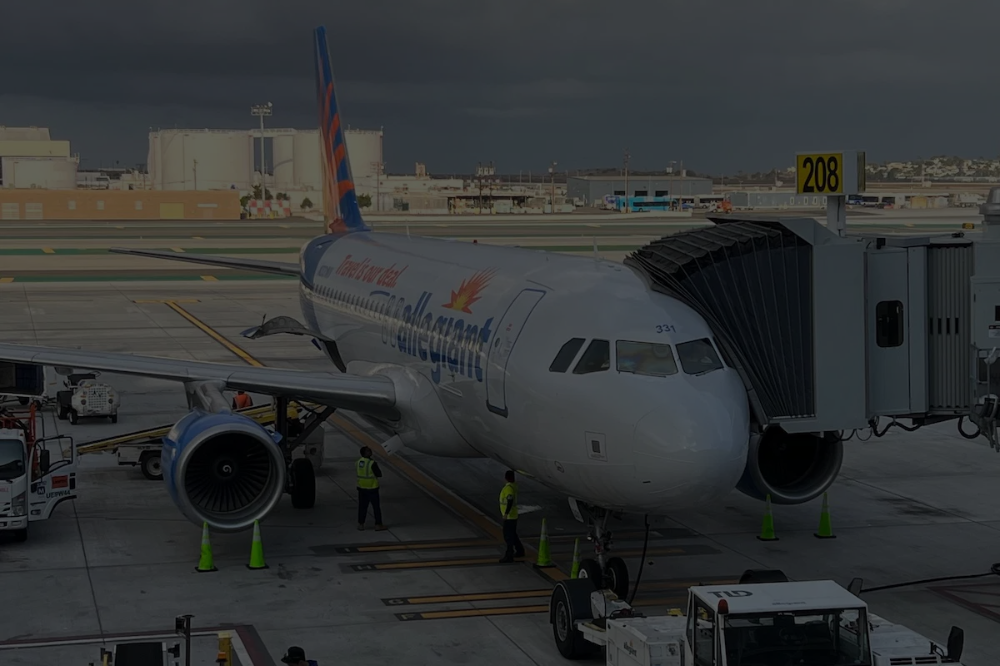The golden era of ultra-low-cost air travel may be coming to a turbulent close in the United States. For years, airlines like Spirit and Frontier have built their empires on offering rock-bottom ticket prices at the expense of comfort and perks.
But a confluence of factors has created headwinds for these budget carriers, forcing them to reevaluate their business models and leaving consumers to question if cheap flights are even worth it anymore.
This blog post takes a closer look at why ultra-low-cost airlines are struggling, the competitive landscape that’s reshaping the industry, and what this all means for travelers moving forward.
What Happened to Budget Flights Being a Bargain?
Travelers across the United States once eagerly booked budget flights, lured by prices that major carriers couldn’t match.
Spirit Airlines, for instance, capitalized on low operational costs, packed planes, and unbundled pricing to make air travel accessible to millions.
You could snag a ticket across the country for $50 or less—as long as you didn’t mind skipping legroom, paying extra for carry-ons, and enduring minimal customer service.
But in the post-pandemic world, that model no longer seems sustainable. Here’s why:
- Rising Costs: Labor shortages, increased airport fees, and higher fuel prices have pushed costs upward for budget airlines. These carriers can no longer maintain their razor-thin profit margins.
- Demand Shifts: Leisure travelers, a crucial demographic for low-cost airlines, have scaled back their flying habits due to economic uncertainty. Meanwhile, corporate travelers and frequent fliers, who tend to spend more, continue to favor full-service airlines.
- Industry Competition: Major airlines like Delta and United are competing aggressively by introducing “basic economy” options, offering budget-friendly fares without skimping on basics like legroom or in-flight drinks. This undercuts the low-cost proposition of budget airlines.
Jim Wahlen, a frequent traveler from Chicago, sums up the sentiment shared by many passengers today:
“I used to think flying with ultra-budget airlines like Spirit or Frontier was a great deal. But after accounting for all the fees, I could have flown with Delta for nearly the same price, minus the stress.”
The Hidden Costs That Add Up
For many travelers, the initial appeal of a $49 plane ticket disappears when the hidden fees start piling up. Want to bring a carry-on? That’ll be $40. Need to select your seat? Another $20. Want water during your flight? Open your wallet.
This à la carte approach worked for years but now risks alienating passengers. Frontier’s CEO Barry Biffle acknowledges the shifting expectations of consumers in 2025, saying, “People are expecting more from their travel experience, so we’re evolving by introducing more service-oriented options, like seats with extra legroom and free checked luggage.”
This pivot, while intended to attract new customers, also increases operating costs, effectively removing the very factors that once set these budget airlines apart.
Why Full-Service Carriers Are Winning
While low-cost airlines struggle to adapt, their full-service counterparts are thriving. How? By leveraging their international routes, corporate partnerships, and loyalty programs to offset the challenges within the domestic market.
Delta, United, and American Airlines have all added stripped-down “basic economy” fares to compete directly with budget airlines.
These fares are marketed at a price point similar to those of Spirit or Frontier but come with extra perks, such as complimentary beverages, decent legroom, and reputable on-time performance. Ultimately, they’re proving to be a better value.
Scott Kirby, CEO of United Airlines, encapsulated the competitive advantage during a conference earlier this year:
“Our basic economy product still respects the customer. We don’t nickel-and-dime passengers like some of our budget competitors, and they notice the difference.”
Additionally, loyalty programs offered by these carriers keep frequent fliers engaged. Earning miles on budget airlines often feels less rewarding due to fewer amenities and limited route options, whereas full-service carriers present robust programs with meaningful redemption options.
The Future of Air Travel
What does all of this mean for passengers moving forward? Here are a few trends shaping the future of air travel:
1. Higher Ticket Prices Across the Board
The days of consistently finding sub-$50 flights are fading. Even budget airlines are abandoning their rock-bottom pricing strategies to offset rising costs.
Expect to see increases for both economy and premium seats, albeit a gradual rise rather than astronomically higher fares.
2. Improved Services on Low-Cost Airlines
With greater competition from full-service carriers, budget airlines are doubling down on customer experience. Slightly comfier seating, fewer surprise fees, and improved on-time performance are just some of the enhancements in the works.
3. The Rise of Regional Carriers
Smaller regional airlines may fill the gap left by low-cost giants that are stretching to expand their operations.
These niche players often serve underserved routes and charge more reasonable fees, making them a compelling alternative for budget-conscious travelers outside metro hubs.
4. Consumer Fatigue with Excess Fees
Travelers are increasingly questioning whether the savings from budget airlines are worth the added frustrations of excessive fees and a bare-bones flying experience.
This growing dissatisfaction creates an opportunity for airlines that can balance affordability with a comfortable and transparent customer experience.
5. Green Initiatives Driving Costs
Sustainability concerns are another factor reshaping the industry. With airlines facing growing regulatory pressure to reduce their carbon footprint, investment in greener technologies is likely to contribute to higher fares in the future.
Tips for Navigating the New Reality of Budget Air Travel
If you’re still hoping to find affordable flights amidst these changes, here are some strategies to keep in mind:
- Compare Bundled Costs: Don’t be lured in by a low base fare. Factor in seat selection fees, baggage charges, and other add-ons to determine the true cost of your ticket.
- Prioritize Flexibility: Choose carriers with flexible cancellation or rescheduling policies, especially since unexpected delays or cancellations can spell disaster with budget airlines.
- Sign Up for Alerts: Websites like Skyscanner, Hopper, and Google Flights can help you stay ahead by notifying you when fares drop within your preferred routes.
- Consider Alternatives: For shorter trips, evaluate bus or train options. Sometimes the savings are significant, and you’ll avoid the stress of airport logistics.
- Travel Light: To avoid extra fees, pack only a personal item that fits under the seat, and skip carry-ons or checked luggage altogether.
Deciding Between Budget and Full-Service Airlines in 2025!
When deciding who to book your next flight with, consider what you value most in your travel experience. If you’re willing to sacrifice comfort for the lowest possible fare, budget airlines still offer a way to save on flights.
However, if reliability, fewer fees, and a pleasant experience matter more, full-service carriers may ultimately deliver greater value. The days when budget airlines ruled the skies are coming to an end. The question now is whether they can adapt to new consumer demands quickly enough to stay in the game!

